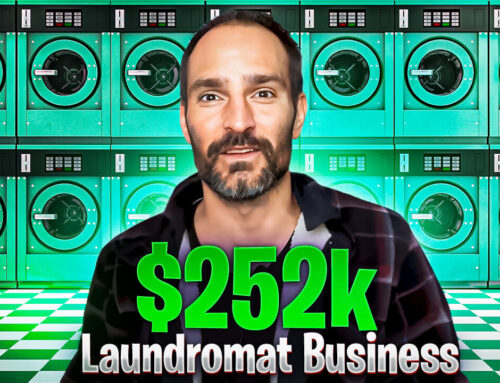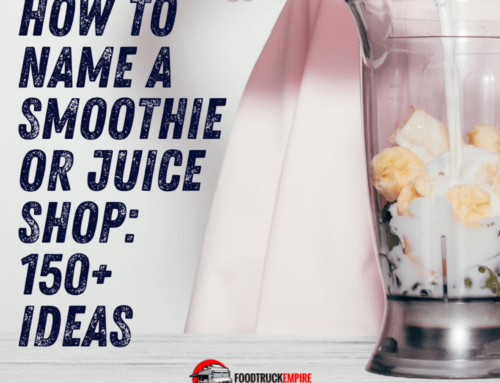Podcast: Play in new window | Download | Embed
Subscribe: RSS
Have an idea for a food business, but are short on funds to make it happen? One of the best ways to put your business in front of angel investors is with a pitch deck.
On this page, we break down everything you need to make a pitch deck that can be presented to investors, friends, or customers. We even provide templates and samples you can download on this page for free. Here’s what you’ll need to get started:
- What is a pitch deck?
- Sections of a pitch deck
- Pitch deck templates
- How to prepare for a pitch deck presentation
What is a pitch deck?
A pitch deck is a short presentation document used to express the basic concept of a business, including how revenue will be generated, cost to get started, and marketing plan. Pitch decks are generally short (between 10 – 15 slides in length) and can be presented to a group of potential investors in under 10 minutes.
The entire point of a pitch deck is to get straight to the point of what your business does and how you intend to make money. This is not intended to be an in-depth like a business plan where you’ll explain the detailed the financials of the business. This is a short document that helps you explain what your business does in a few minutes.
Related Reading: How Super Batter Pancake and Waffle Mix Got into 15 Retailers in 6 Months
Sections of a pitch deck
The pitch deck included in this post is designed for a new or existing food business startups. Here’s what to include in a pitch deck.
Title: This slide lists the name company name, year the business is being founded, and the name of the founder (probably you!).

My example title slide.
About Us: Briefly describe your business and mission. Tell us about the food you plan to serve. This only needs to be 2 – 3 paragraphs in length.
Team: List the members of your team. For most startup food businesses this is usually only one or two people. If you have multiple team members, make sure to clearly identify each persons role in the company.
Impact on Community: Does your company have a social benefit? The goal of your business could be to help raise money for a non-profit in your area. The program could also provide job training for at-risk youth. Your impact on the community could be as simple as providing healthy meals to customers in your community.
Menu: What type of food do you plan to sell at your food truck or restaurant? If you have a food product business like Keto-friendly crackers, describe the products and flavor options here instead.
Operations Schedule: How often do you plan to vend or work on the business? If you are a mobile food business, be working a lot of weekends as this is the busiest time for most of these businesses. You can break out the operations schedule by day and hours.
Vending Locations: Where exactly do you plan to vend and sell your food? Is there a specific farmers market you’ve got in mind? Do you plan to open a restaurant at a local strip-mall? Tell us where you plan to sell your food. If you’re opening a CPG business, you should list the specific stores where you would like to get a retail or sell online through an e-commerce store.
Competitive Analysis: Identify your competitors and list them here. You will use this competitive analysis to help identify what makes company unique. Be sure to include details like pricing or marketing approach.

My competitive analysis example slide.
What’s Different: Describe how you business is unique in the local or national market. Does your product offer health benefits, distinct flavors, unique branding, or other advantages that will help your business standout from what’s currently available in the market.
Estimated Startup Costs: Determine how much money you’ll need to open the business. Common startup costs for a food business include equipment (cooking equipment, food trailer), permits, initial inventory, and insurance.
Funding the Business: Where do you plan to get the funds needed to start the business based on your estimated startup cost? Here you will list personal funds, friends / family donations, and the amount you’re hoping to get from investors. Don’t forget to include the specific amount of money you intend to raise from each section.
- Personal funds: This is funding for the business that you bring to the table. Investors like to see you bringing some money to the table to ensure you’ve got skin in the game. This money could come from a savings account or 401K.
- Friends / family: This is money raised for your business from people you already know that believe in your business. This could be from your mom, sister, brother, rich uncle, or a childhood friend.
- Other plans to fund: List the other ways are you planning to fund the business. Credit cards? Bank loan? Crowdfunding?
- Investor requested funds: If you plan to participate in our Mobile Food Challenge, please share how much investment you’re requesting here.
Target daily sales goal: This slide helps you get clear on the amount of sales you need to be happy and comfortable with the business. This target daily sales goal should at a minimum cover all your monthly expenses to operate the business.
Here’s the formula you’ll need to estimate in this section:
goal number of sales X average ticket value = gross sales goal
Longterm vision: List your longterm goals for the business. These can be short bulleted statements. Think in terms of the next 5 – 10 years. This section is a good place to articulate any plans to scale the business in the future.
Example goals:
- Expand into a second mobile unit
- Expand from mobile into a restaurant location.
- Donate 10,000 meals to local food shelf in 10 years.
Pitch Deck Templates
Here are my pitch deck templates available on Google Docs. You can save these files to your computer and edit with your own business information.
- Blank Pitch Deck Template – Download this template with basic instruction on filling out the document.
- Completed Pitch Deck Sample – Here is a completed pitch deck that includes financial numbers, longterm vision, and other components of a pitch deck. This is intended to provide you an example of how to complete each slide.
If you don’t like the design of this pitch deck, not to worry. There are literally thousands of pitch decks available online by conducting a quick Google search or exploring Google Docs. Just keep in mind that many of these documents were intended for tech startups so you will need to adjust the slide topics to make sense for a food business.
How to prepare for a pitch deck presentation

Most pitches are now conducted live and online.
After you’ve got your pitch deck finalized there’s still one more step. Making the plea to investors for the capital needed to start the business. Historically, a pitch deck presentation would happen live in front of investors behind closed boardroom doors. But times have changed. These pitches usually occur virtually on Zoom meetings.
Serious about starting a mobile food business? Click here to get our free business kit.
After you’ve taken the time to put together a pitch deck, you don’t want to drop the ball at the five yard line with a poor presentation. Common issues that pop-up in these live pitches include wrong screens being shared, poor audio, or a bad internet connection. Hiccups like these not only throw you off your game, but they can make you look unprepared. Not a good message to send to investors!
Here are best practices to ensure your pitch goes smoothly in an online setting. Many of these mistakes I’ve been guilty of so don’t feel bad if they’ve happened to you.
- Poor internet connection: As more participants that join a meeting, the internet connection can lag if you don’t have a strong signal. Before presenting make sure you’re in an area with a strong connection. Before presenting, I make sure to go to the room closest to my router. In some parts of my house, the signal is weak and can lead to issues. Make sure you choose a place with a strong internet connection whether it’s your own home or co-working space before presenting.
- Close down applications: The last thing you want is to get an instant message from a college roommate while presenting your business idea. Make sure to shut down all other applications before making your pitch. This can also help you computer run faster during the presentation.
- Choose a quiet location: Dogs barking in background. Kids running amok. It’s all part of an everyday Zoom presentation, but do everything you can to keep things on your end quiet. This might mean leaving your house for the presentation. I’ve done a lot of Zoom meetings from my garage.
- Practice presenting: Try to keep your presentation at 10 minutes max. Time yourself going through the deck. Let the panelists know before you start the presentation that this will only require 10 minutes of their time and then you will open things up for questions.
- Know your numbers: If you’ve ever seen an episode of Shark Tank, you understand how important knowing the financials of a business is to prospective investors. Come prepared with answers about unit cost, what you’ll use the funds toward, and sales projections.
By utilizing this template and developing a strong pitch, you can literally enter any room and be prepared to explain a business idea… whether it’s in person or online. We look forward to seeing your pitches!
If you’d like to join our free online community of 45,000+ food business founders, click here. Each week we send a new food business case with revenue numbers for you to learn from. When you sign up you’ll also be invited to watch the Mobile Food Challenge pitches live even if you don’t plan to submit a pitch yourself.




